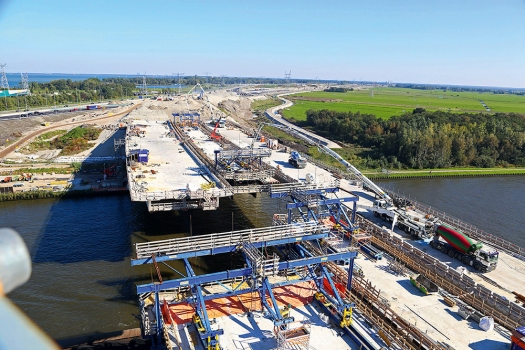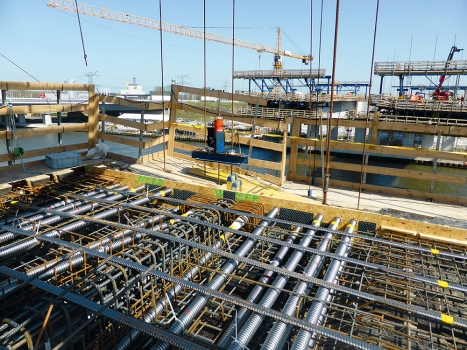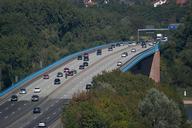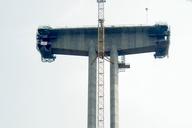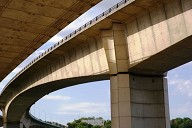ARK Bridge belongs to Amsterdam’s largest infrastructure project
A huge infrastructural project is currently under construction in the metropolitan area of Amsterdam. The SAA (Schiphol-Amsterdam-Almere) project will improve the motorway network between Amsterdam, Schiphol Airport and the city of Almere, which is located east of Amsterdam. The total length of the project is 63 km, and in addition to new lanes and motorway sections, the project includes a tunnel, an aqueduct and approximately 100 bridge structures. Construction work started in 2012 and is scheduled for completion in 2026.
One of the major structures in this project is the ARK Bridge that accommodates the new motorway section crossing the Amsterdam-Rhine Channel. The Joint Venture SAAone submitted proposals for several structures that are being built within the scope of this major project. SAAone was awarded the contract for the ARK Bridge. The design had to provide sufficient clearance for container and cargo ships which frequently travel on this important channel connecting Amsterdam with various German cities along the River Rhine.
Three parallel hollow box girder bridges with 284 m total length
The ARK Bridge consists of three parallel concrete hollow box girder bridges with a total length of 284 m. The structures have main spans of 142 m and side spans of 71 m each. The northern and the southern bridges are double cell box girders with 20.9 m respectively 17.6 m wide bridge decks. The middle bridge is a single cell box girder with an 11.25 m wide bridge deck.
The bridges were built using the balanced free cantilever construction method. The first seven segments on both sides of the hammer heads are 4 m long, the following segments are 5 m long. The depth of the bridge varies between 6.25 m at the pylons to 2.75 m in the middle of the main span.
Three form travellers for simultaneous erection of the segments
In order to limit the construction time of the bridge superstructure, three sets of form travellers were used for an almost simultaneous erection of the segments at the three pylons. On average, the bridge segments were erected in a weekly cycle. First of all, the reinforcement and post-tensioning tendons were installed. After pouring the C70/85 concrete, the transverse and longitudinal post-tensioning tendons were stressed. Subsequently, the form travellers were moved to the next position, and the formwork was prepared for the next cycle. The tendons were stressed a day after the concrete was cast.
About 2,200 strand tendons were installed
DSI Netherlands assisted SAAone in the final planning phase for post-tensioning and supplied installed, tensioned and grouted DYWIDAG post-tensioning tendons in all bridges. In the three new structures, strand tendons (1,860 N/mm²) with a strand tonnage of 1,060 t were used: 1,530 tendons as transversal tendons in the bridge deck, 504 tendons as longitudinal tendons in the top concrete slab and 178 tendons as longitudinal tendons in the bottom concrete slab.
References
Structure Types
- About this
data sheet - Product-ID
7514 - Published on:
12/07/2017 - Last updated on:
17/11/2021

